The Super Powers mini-comics officially came out in April 1984 with the figs. Celebration time!
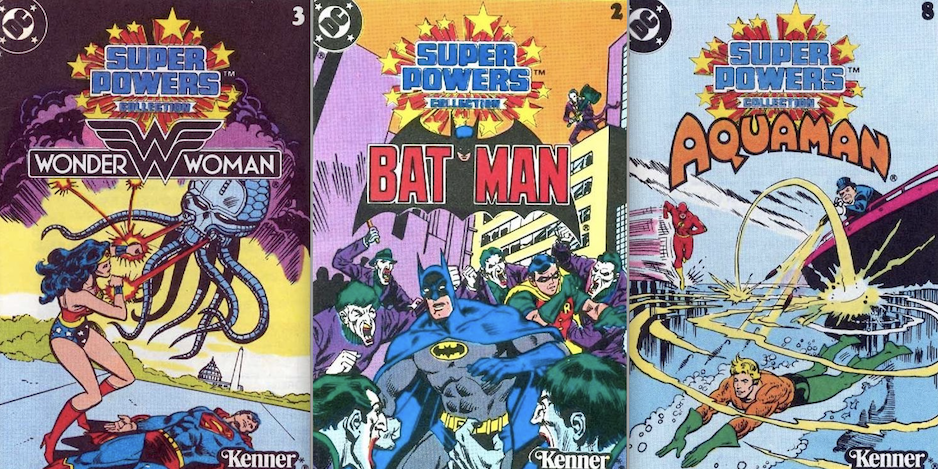
By CHRIS FRANKLIN
The Super Powers Collection of action figures and vehicles by Kenner remains the high-water mark for all DC Comics toy lines.* The level of sculpting and fidelity to the comics, and the eye-catching packaging was second-to-none at the time, and has rarely, if ever been surpassed. Kenner worked closely with DC to ensure that authenticity (minus the weird Kenner-conceived characters they foisted on us in later days, like Cyclotron). One way to do that was to pack a mini-comic in with each figure from the first two series releases. These short (in both length and dimension) stories are a time capsule of DC Comics at the moment, and perhaps a time before, and are very endearing. Here are 13 things this writer finds very appealing about the tiny comics that pack a Power Action Punch!!!
—
13. Secret Origins: The Carry Case
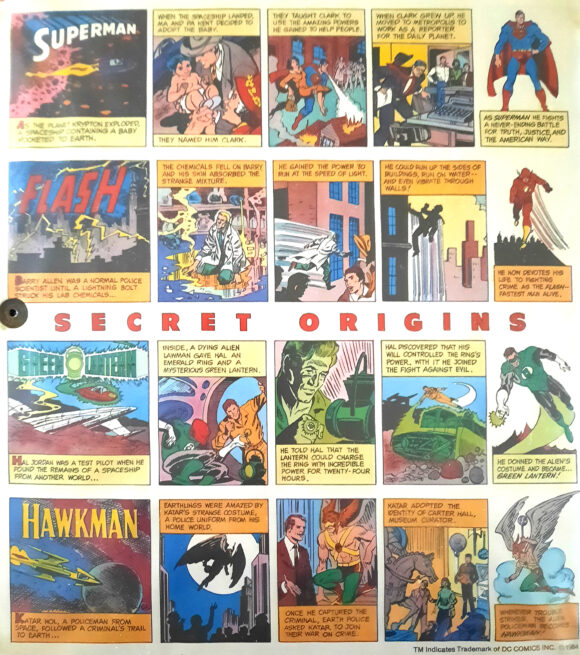
Interior front and back flaps from Super Powers Collection carry case
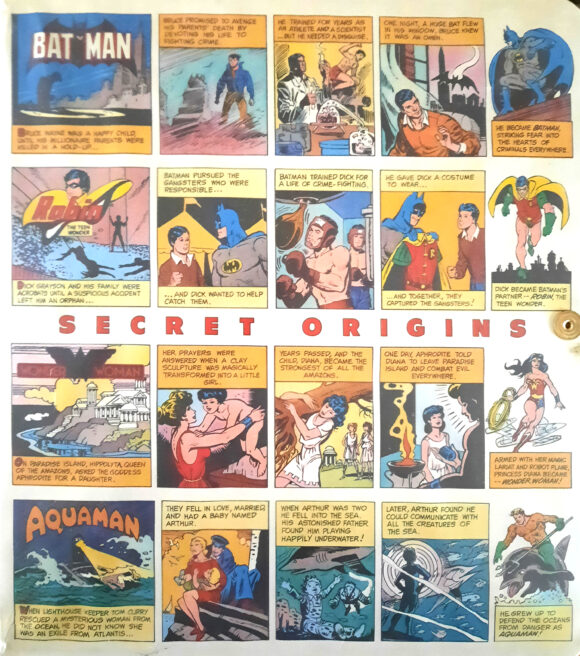
Interior front and back flaps from Super Powers Collection carry case
Think that the only way to get comics in the Super Powers line was in the included mini-comics? That’s where you’re wrong! Often forgotten is the Kenner-produced carry case, which featured beautiful Dick Giordano artwork on the front and back. But even more impressive inside there were actual comics, and not only that, they detailed the Secret Origins of the DC Superheroes! The first eight heroes each got a strip of five panels breaking down their backstories to the most basic level. But that’s all an uninitiated kid needed to know to understand their action figures! Of course, the idea is to store your figures and accessories (and maybe your mini-comics and clipped file cards from the packaging) in the slots provided, but the origin stories make this one of the best carry cases in action figure history.
—
12. Become a Charter Member of the Super Powers Fan Club
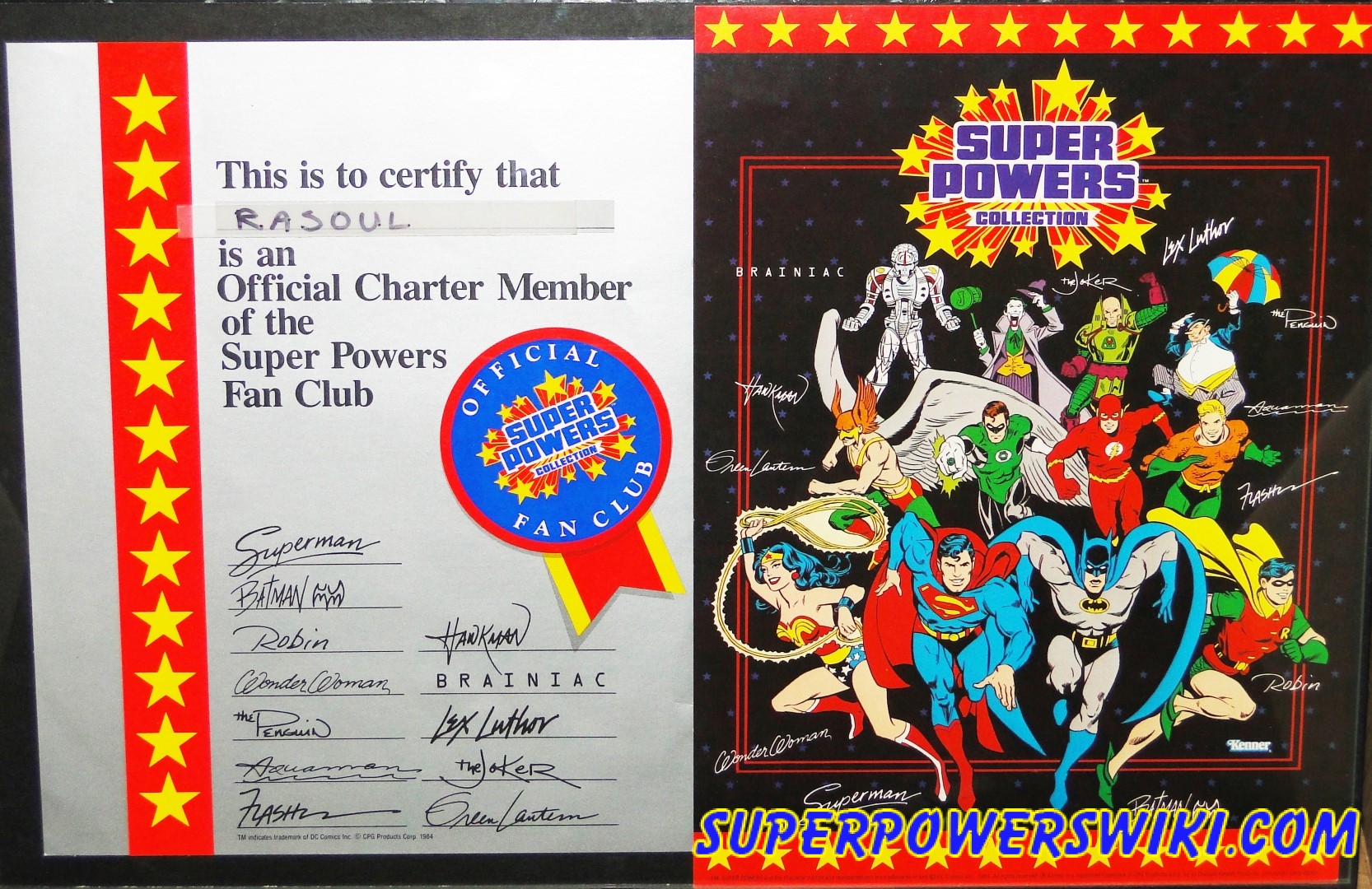
Super Powers Collection Fan Club certificate and poster, image courtesy of superpowerswiki.com
The inside cover of each enclosed mini-comic had the same ad for the Super Powers Fan Club. Fill out the order form, send in $3 (which would buy you about 4 regular comics at the time), and you’d receive a “charter membership certificate, an incredible color sticker, a newsletter, a deluxe patch, a color photo, and DC Comics subscriptions at reduced rates”. I must have cut the cover off my childhood Robin comic and mailed it in, because it’s missing.
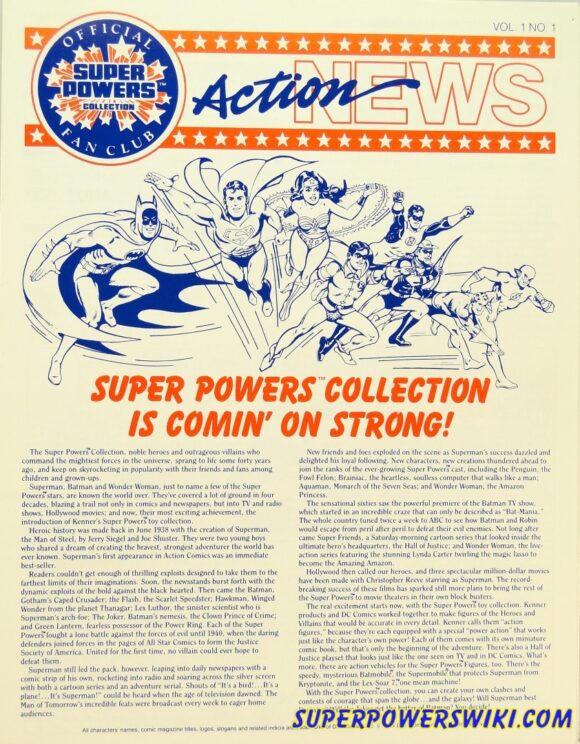
Super Powers Collection Fan Club newsletter, featuring art by Kurt Schaffenberger, image courtesy of superpowerswiki.com
I did receive the Fan Club kit, but I only really recall the newsletter and the “color photo”, which was a card-stock mini-poster featuring all the Series 1 characters, pulled from the DC Style Guide with art by Jose Luis Garcia-Lopez and Giordano, with the heroes and villains’ “signatures.” I assumed once you were enrolled, more issues of the newsletter would be coming. But despite checking my mailbox for a year… that was it. Only one issue was ever produced. Hey, at least it gave us some actual news, that both Darkseid and Green Arrow were joining the line in Series 2!
—
11. Love That Jokermobile!
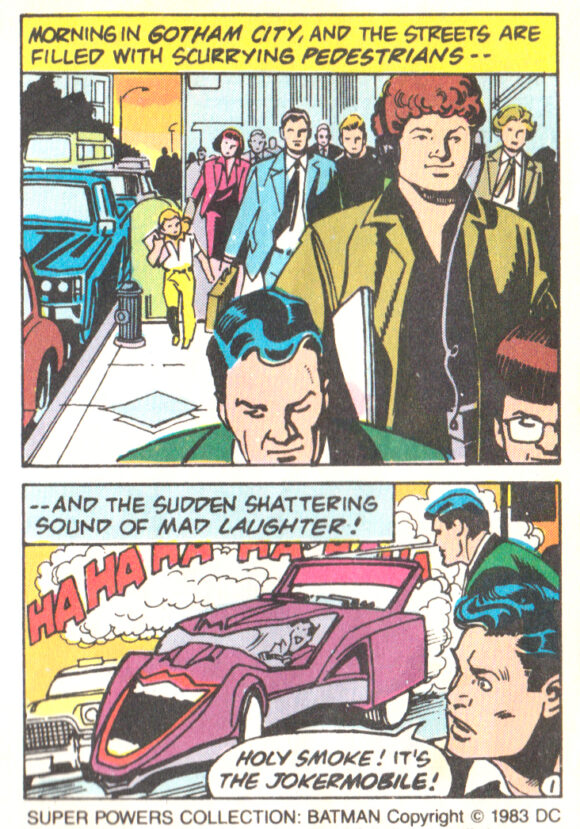
Interior page from Super Powers Batman mini-comic
In the first series mini-comics, the three vehicles available in toy aisles that year get several spotlights: The Supermobile, the Lex-Soar 7, and of course, the Batmobile. But the Caped Crusaders’ famous wheels had competition in several of these adventures, namely in the form of the Jokermobile! The Joker occasionally had his own set of branded wheels going back to the 1940s, but the Super Powers design was brand new.
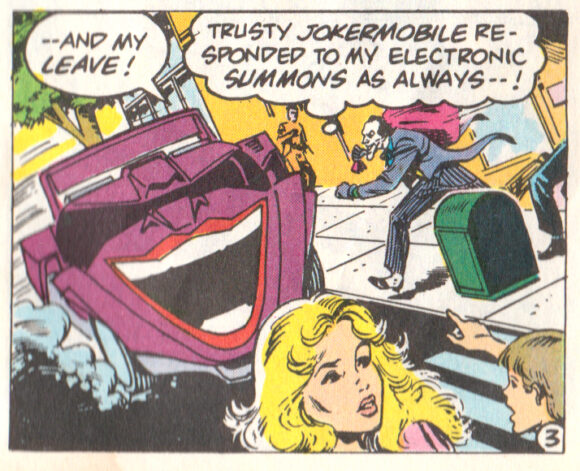
Interior panel from Super Powers Joker mini-comic
Looking like a futuristic, dark purple sports car (although in one story he refers to it as a van), this version appeared in both the Joker’s own comic, Batman’s and Green Lantern’s, and had built in action features just like the other rides in the line. Concept art exists showing this design, with pop-up laughing gas guns, and a chomping mouth up front. So why did we never get this nearly fully formed vehicle in Wave 1, or at least Wave 2? Who’s to say, other than the villain-shift from traditional rogues to Kirby’s Fourth World conquerors. So, blame the Kalibak Boulder Bomber the next time you lament the lack of a ride for the Harlequin of Hate!
—
10. In Their Own Title, At Last!
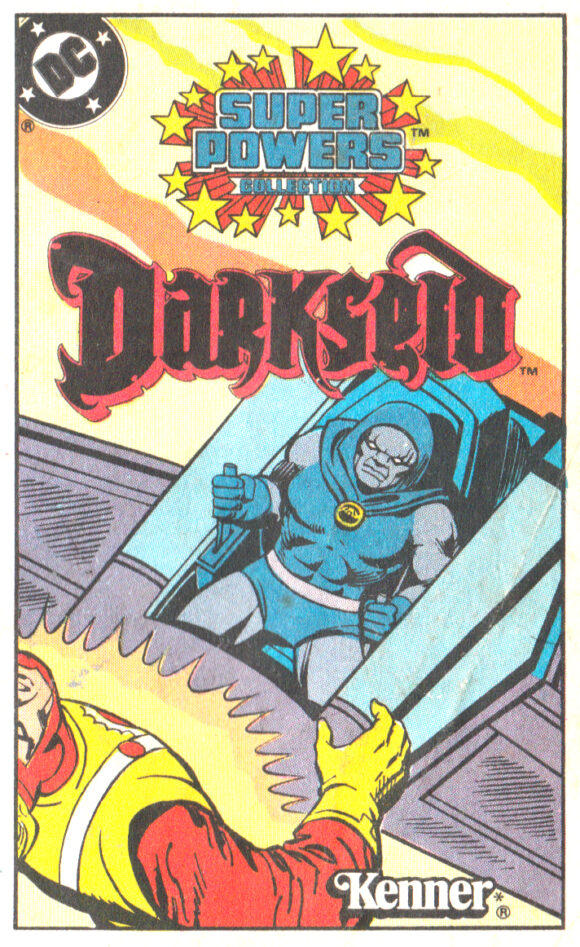
Cover of Super Powers Darkseid mini-comic
The nature of the line meant every character received their own logo on their included comics’ cover, essentially giving them a “first issue” feel. This meant all the villains got their first personalized masthead on a comic cover, minus the Joker, who of course had his own series in the ’70s. Even more surprising, this series represented the first time many of the heroes got their name in lights. Despite existing for 30 years and being a founding Justice Leaguer, the Martian Manhunter never had a solo logo on a comic before.
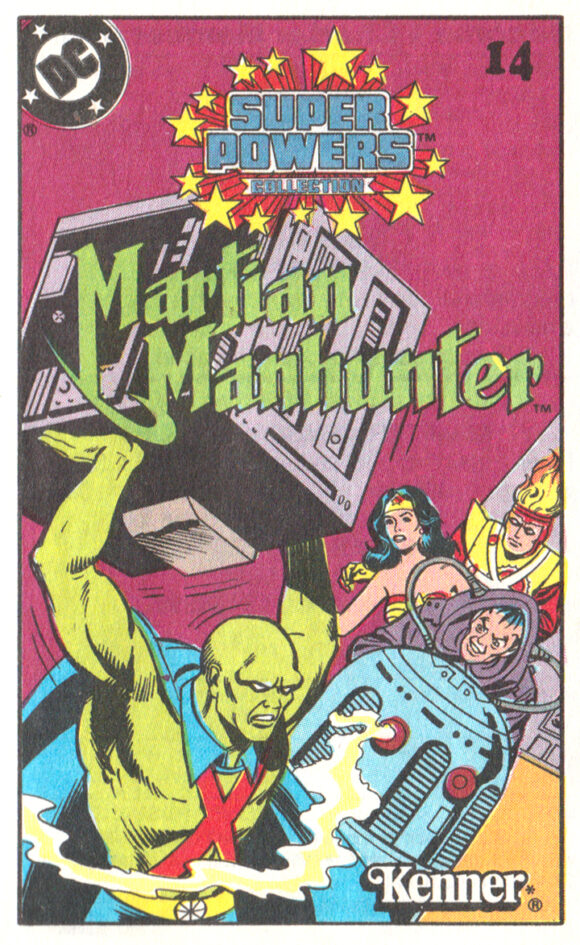
Cover of Super Powers Martian Manhunter mini-comic
Even more shocking, Robin, perhaps the third or fourth most well-known DC hero at the time, had NEVER had his logo up top on a comic without literally being in Batman’s shadow! The last time he even came close was as the headliner of a solo strip in Star-Spangled Comics in the late 1940s. It’s a treat to see the individual and often classic logos of the characters repeated from the packaging art, onto the comics as well.
—
9. Foreign Exclusives
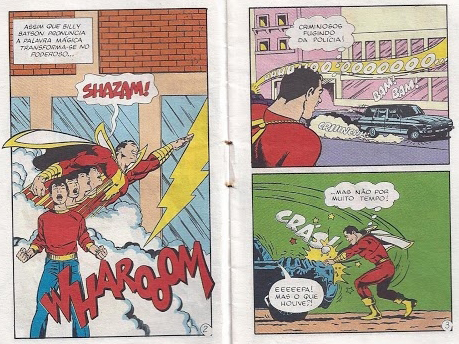
Super Powers Shazam! mini-comic, image courtesy of superpowerswiki.com
Sadly, Kenner dropped the packed-in mini-comics with the third and final series of figures, leaving us with only 23 domestic mini-comics produced. Even as a kid, I took this as a bad sign that the line probably wasn’t long for this world. Amazingly, Estrella, which produced the Super Powers line in Brazil, decided to take up the task of producing mini-comics for the three popular heroes they included in its assortment from Kenner’s third series. Shazam! (Captain Marvel), Plastic Man and Cyborg all received exclusive mini-comics, but only in Brazil!
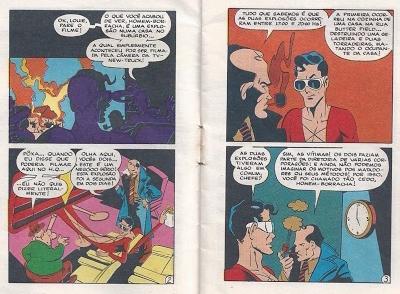
Super Powers Plastic Man mini-comic, image courtesy of superpowerswiki.com
The quality of these comics isn’t up to the level of the US versions, with a lot of swipes from the DC style guide in the Shazam tale, and whole pages of Cyborg’s story lifted from early issues of The New Teen Titans with art by George Perez and Romeo Tanghal, but hey, they’re better than nothing!
Interestingly, Plastic Man’s story is a modified reprint of a Plas tale from Adventure Comics #476 (Oct. 1980) by Martin Pasko, Joe Staton and Bob Smith, which makes me think despite other speculation on the internet, Kenner didn’t have these comics in process for Estrella to run with. Kenner hadn’t reprinted or repurposed artwork for any of their other mini-comics. It’s wonderful that these exist, I just wish someone would translate them from Portuguese and reprint them! For more on the exclusive Estrella mini-comics, visit superpowerswiki.com.
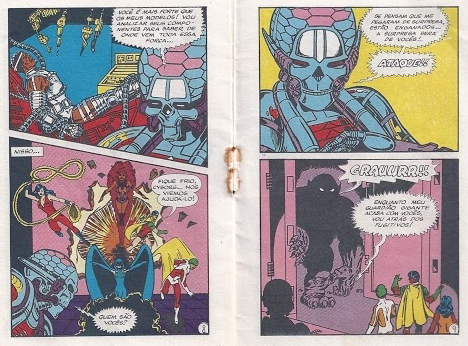
Super Powers Cyborg mini-comic, image courtesy of superpowerswiki.com
—
8. The New Luthor Brainiac Team!
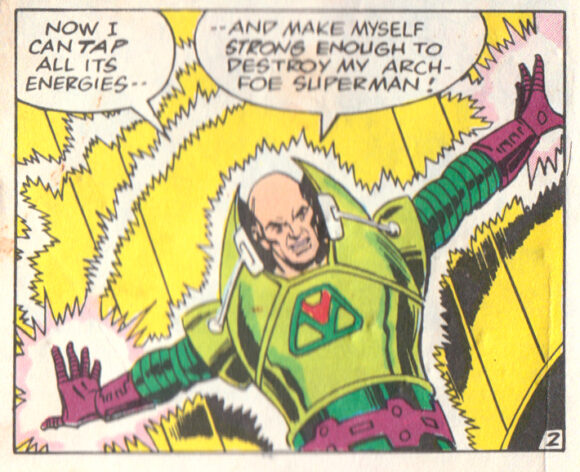
Interior panel from Super Powers Superman mini-comic
Just a year prior to the Super Powers debut on toy shelves, Superman’s two greatest foes, Lex Luthor and Brainiac, were both revamped in separate stories in Action Comics #544 (June 1983), Superman’s 45th anniversary issue. Luthor was given a powerful battle suit designed by George Perez, while Brainiac’s android body was rebuilt into a much more menacing skeletal appearance, conceived by Ed Hannigan. The new designs were not only created to give the characters a visual shot in the arm, and beleaguer Superman with greater threats to deal with, but also to make the villains more “toy-etic” for the in-development Super Powers line!
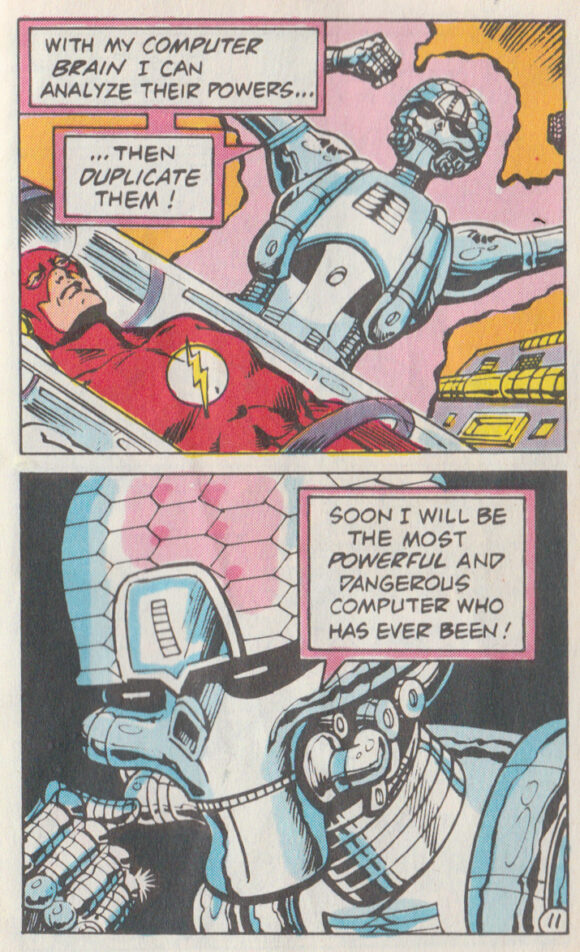
Interior page from Super Powers The Flash mini-comic
Kenner made good use of the characters, producing impressive figures of them both. Being two of only four villains in the first wave, the Metropolis Menaces appeared in quite a few of the mini-comics, vexing the entire DCU! These iterations of Luthor and Brainiac weren’t around long, with Crisis on Infinite Earths sweeping them away just a few years later, but those designs still resonate and always seem to sneak in somewhere each time the rogues are reinvigorated once again.
—
7. The Fourth World
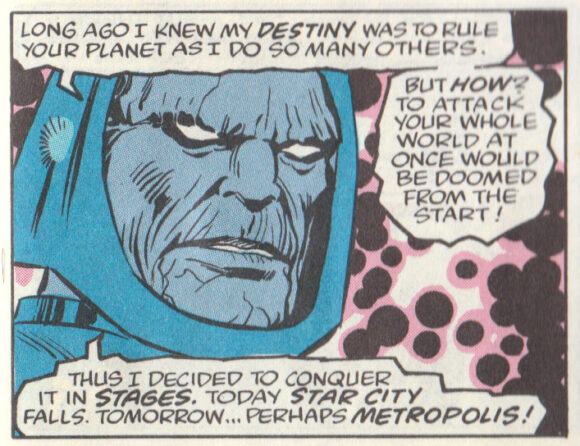
Darkseid from Red Tornado
Darkseid and his cadre of cronies arrived HARD in Series 2, taking over the narrative of the line, just as they had in the tie-in animated series, Super Friends: The Legendary Super Powers Show. Some have lamented this move, as it took away from getting potential, traditional foes from further in the Superman and Batman benches, and beyond into the DCU, like Flash’s Rogues, or say, Sinestro. But you can’t deny the ’80s was the time for the lone, hero-defining megavillain. He-Man had Skeletor, Transformers had Megatron, G.I. Joe had Cobra, and now the DC heroes had Darkseid.
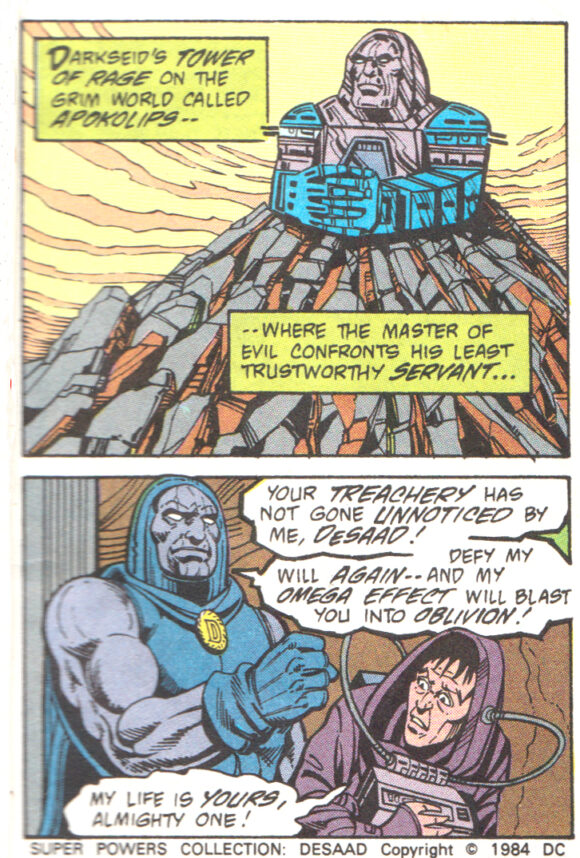
Interior page from Super Powers Desaad mini-comic
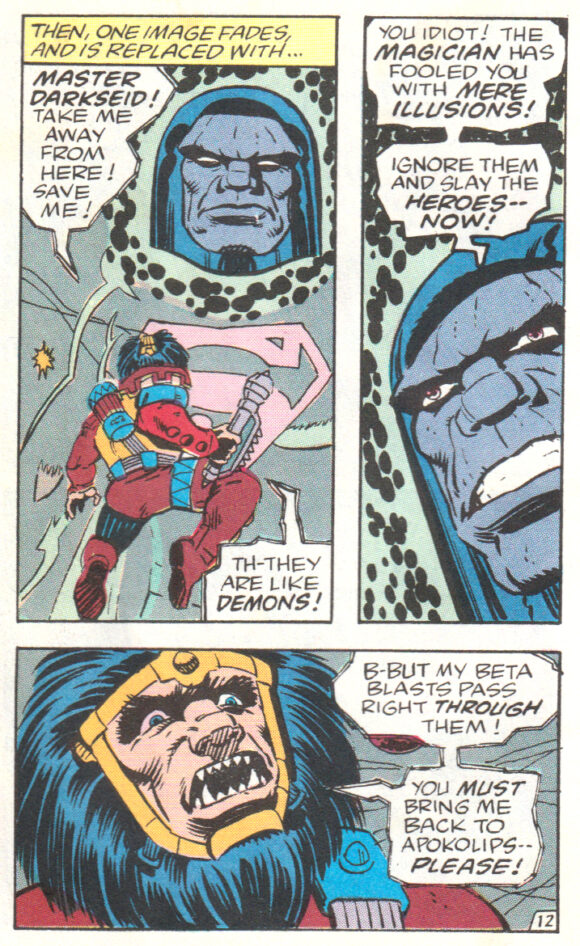
Interior page from Super Powers Kalibak mini-comic
The threat level automatically seemed raised when these denizens of Apokolips appeared with nothing but conquest in mind. What’s even better is Jack Kirby was able to get creator participation in his “Fourth World” characters, thanks to the redesigns he did for the toy line. It’s a shame the King never illustrated any of the mini-comics, like he did the standard Super Powers mini-series. For my money I still prefer his redesigned Kalibak, Mantis and Parademons over the ’70s originals!
—
6. Fun Plots
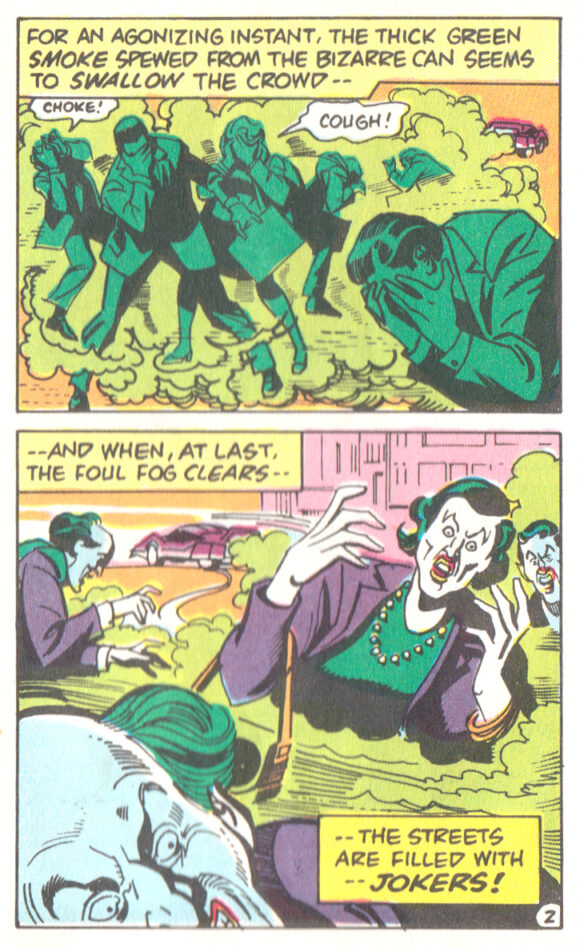
Interior page from Super Powers Batman mini-comic
With only 13 pages of story, you wonder how any creators could produce done-in-one narratives for 20-plus comics. Well, you are discounting the skills of Bronze Age comics writers, my friends. It’s unknown who wrote these comics, but it’s safe to say it was a cadre of DC veterans, who had cut their teeth on short horror and war stories for the publisher, in addition to back-up features and secondary characters in the Dollar Comics era of a few years prior. They knew how to set up a villainous threat, introduce a hero, have that hero initially lose the battle, then team-up with a Super Friend to defeat the villain by page 13.

Interior panel from Super Powers Red Tornado mini-comic
From the Joker using gas to change Gothamites into mindless copies of himself, to Darkseid wanting to replicate Red Tornado’s design for an army of androids, the motivations were there as well. Sure, there were some head scratching plans enacted, like Penguin risking a run-in with the Flash over stealing a few real-life Emperor Penguins from the Central City Zoo, but hey, they were always entertaining! No one said this was meant to be Shakespeare!
—
5. The Comic Art
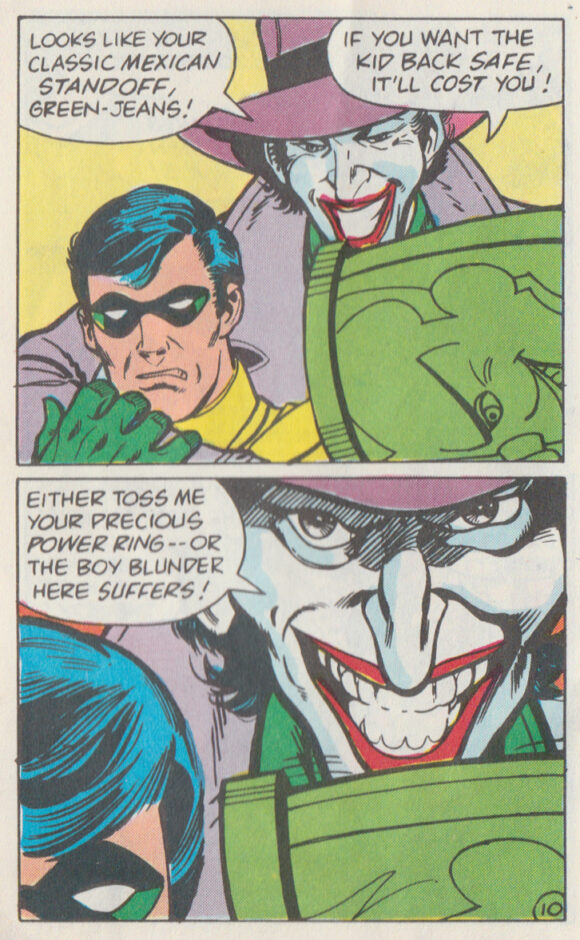
Interior page from Super Powers Green Lantern mini-comic
There are no credits on the mini-comics, and surprisingly little information on the internet, but it’s obvious DC created these tales in-house, using a bevy of artists in their stable at the time. It appears Adrian Gonzales, who also drew the first four issues of the first standard-sized Super Powers mini-series, and Greg Theakston who inked covers and the second series interiors over Jack Kirby’s pencils, contributed. Former Flash and future Spider-Man artist Alex Saviuk seems to have penciled a few as well. Mike DeCarlo’s distinctive inks stand out on the Dr. Fate comic, and Blue Devil artist Paris Cullins draws a truly chilling Joker in the Green Lantern issue.
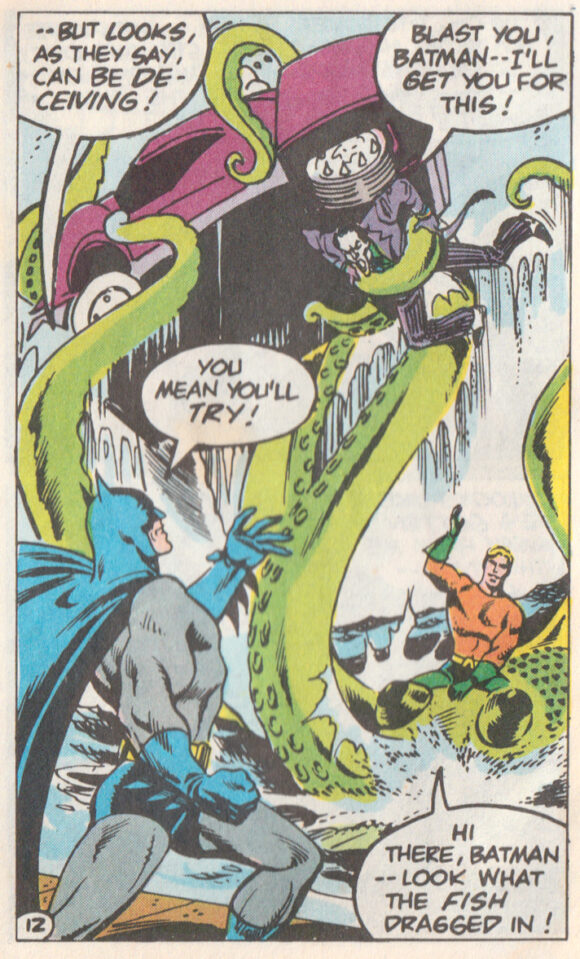
Interior page from Super Powers Joker mini-comic
The Clown Prince of Crime gets another fine rendition in his own comic, drawn by the criminally underrated Eduardo Barreto, who also illustrated Aquaman’s comic. Long time DC stalwarts Jose Delbo and the late, great Joe Giella’s hands are also evident on these comics. Having these artists create these comics only strengthened the connection to their “big brothers” on the stands, and helped legitimize these efforts in the eyes of young, but experienced comics fans like myself.
—
4. Wonderfully Random Team-Ups
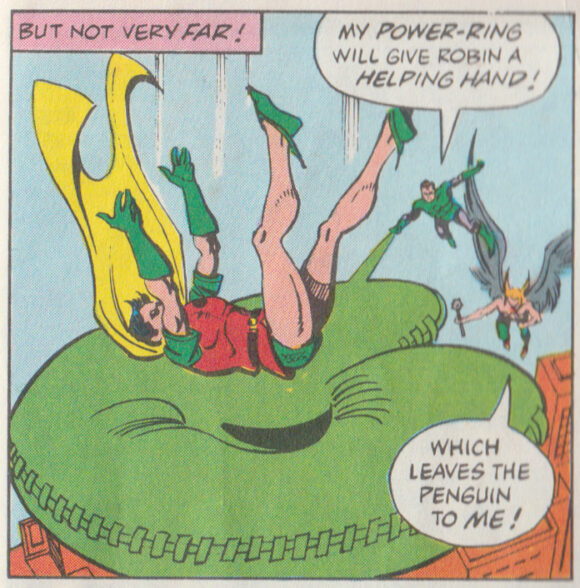
Interior panel from Super Powers Robin mini-comic
The heyday of the team-up comic was behind us by 1984. The Brave and the Bold had ended the year prior, with Batman signing up permanent co-stars in Batman and the Outisders. Marvel-Two-in-One had given way to a Thing solo title the same year. Superman was still hosting guest-stars in DC Comics Presents, but Marvel Team-Up would be canceled the following year. That didn’t stop the creators of the Super Powers mini-comics from utilizing the superhero team-up concept. Nearly every issue had a guest appearance by at least one other hero.
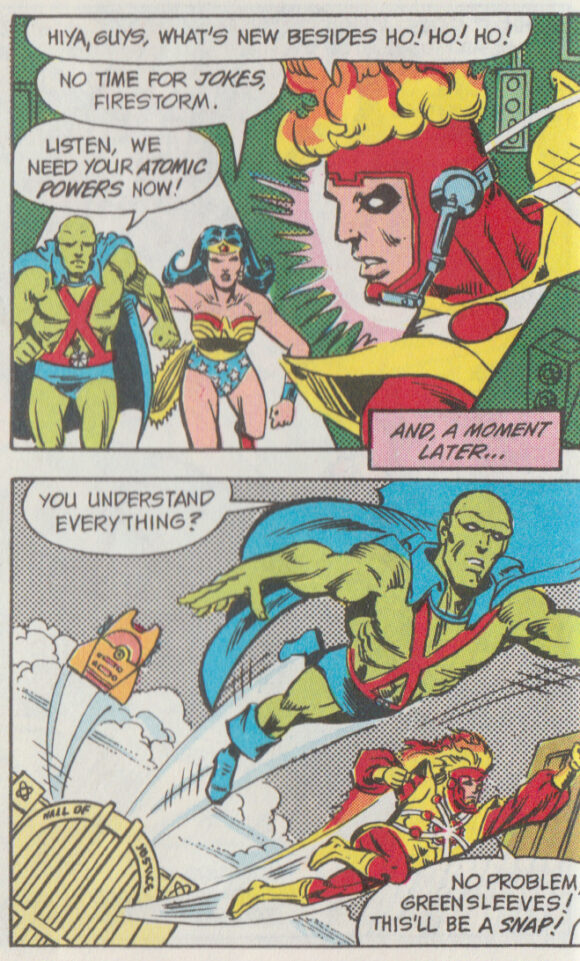
Interior page from Super Powers Martian Manhunter mini-comic
Wonder Woman showed up to help Batman and Robin stop the Joker in the Caped Crusader’s comic. Aquaman joined Batman in nabbing the Joker in the Clown Prince’s tale. In his own book, Robin called on an assist from Green Lantern and Hawkman in defeating the Penguin. Martian Manhunter enlisted the aid of first Wonder Woman and then Firestorm in his effort to defeat Desaad. With the classic Justice League of America disbanded, and the team-up title nearly extinct, this was one of the last places to find the big-name DC heroes quite so chummy in the mid-’80s.
—
3. Mix-and-Match Rogues
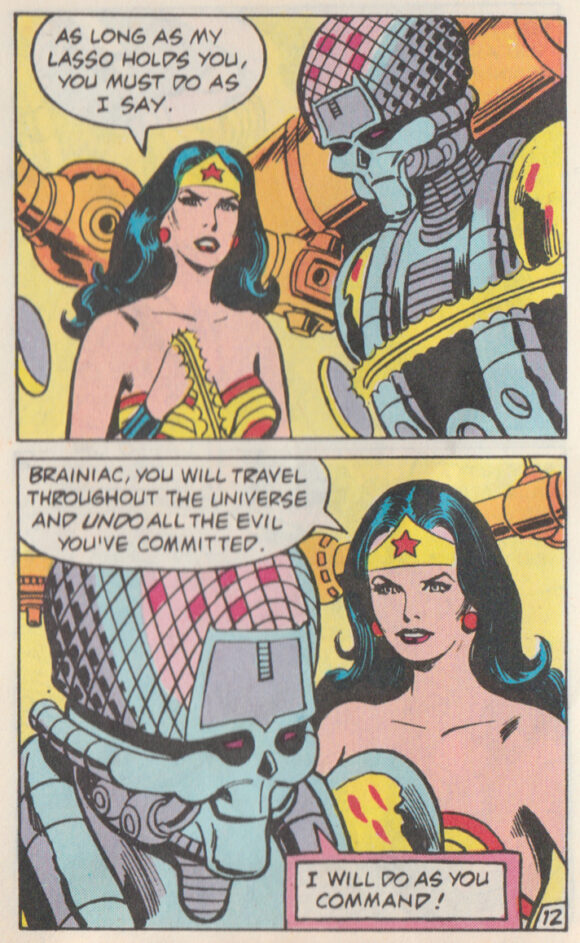
Interior page from Super Powers Wonder Woman mini-comic
As fun as the team-ups were, with a limited set of villain figures, it was a blast to see heroes take on foes they never would otherwise. Where else would you see Green Lantern battle the Joker? Witness Brainiac take on first Wonder Woman, then the Flash? Lex Luthor battle Hawkman, Flash and Green Lantern? The Penguin tackle Aquaman and the Flash?
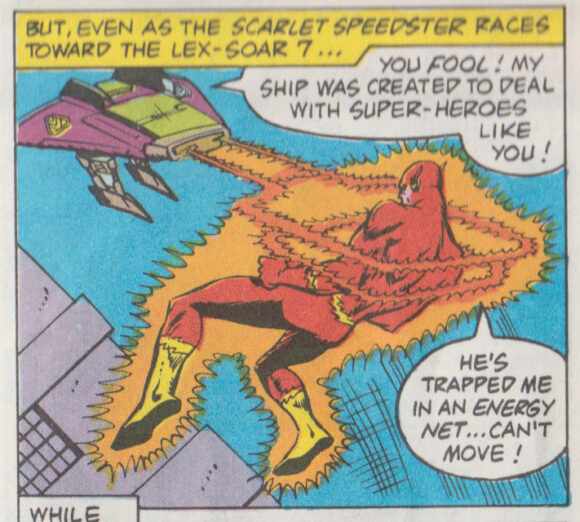
Interior panel from Super Powers Hawkman mini-comic
Years before Marvel’s big crossover event “Acts of Vengeance,” it seemed this ersatz Legion of Doom was randomly drawing names from hats to make up for the other heroes’ rogues being out of town. It made the DC Universe feel both bigger, and smaller at the same time, knowing that Superman didn’t have to show up every other week when Lex broke out of jail!
—
2. Hey Kids, Comics!
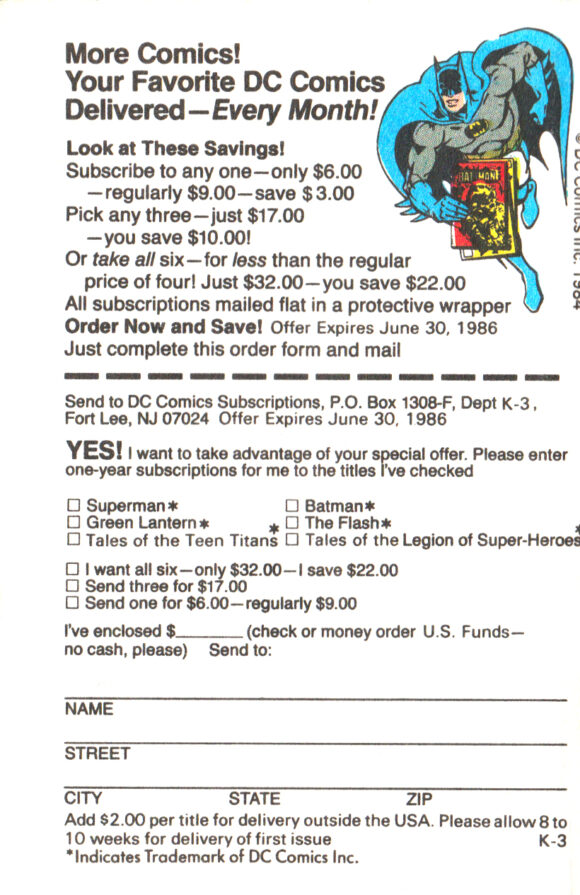
Back cover ad from Super Powers mini-comic
Although comics of the time were still readily available at a variety of retail outlets, the industry’s best years of sales were behind them. This meant that not every kid who bought a Super Powers figure was a comics reader. Maybe they watched the Super Friends? Maybe they had seen the Christopher Reeve Superman films, or reruns of the ’60s Batman TV series? By including a comic with the first two waves of figures, DC and Kenner were indoctrinating a potentially new audience not only in their publishing universe, but in the language of another art form.
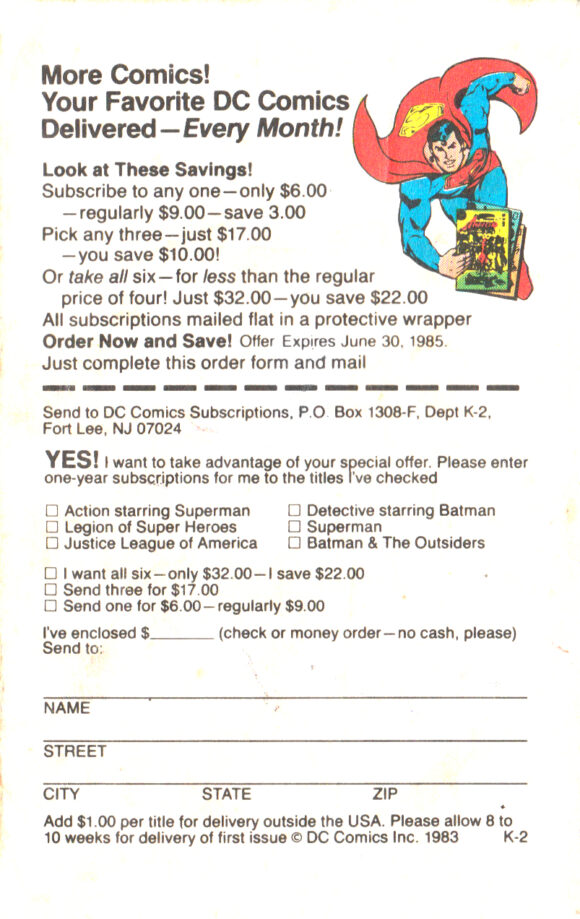
Back cover ad from Super Powers mini-comic
Very smartly, the back cover of every mini-comic was a subscription ad, allowing readers to have the regular adventures of the Super Powers heroes mailed directly to their door for a fairly deep discount off the newsstand price! What a wonderful way to spread the word about this medium we all love.
—
1. The Last Gasp of the Silver and Bronze Ages
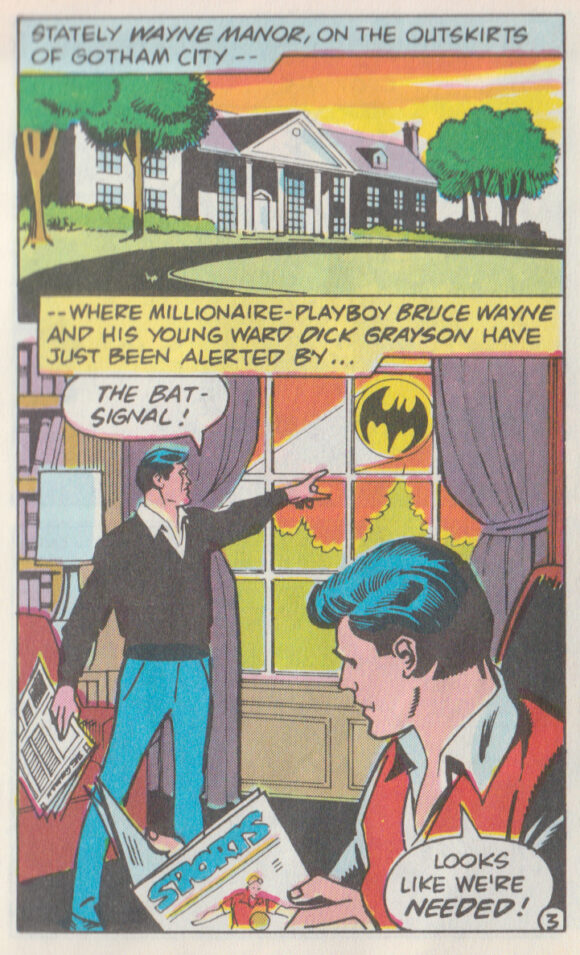
Interior page from Super Powers Batman mini-comic
By 1984, DC Comics was changing. Stories were becoming more sophisticated, ongoing subplots were more frequent, and characterization was more developed. Due to their brevity, and their target audience, the Super Powers mini-comics often felt like tales from a few years earlier. Even more so, actual change was coming to DC’s comic line at the time, shaking up long-existing status quos. Dick Grayson was no longer Robin, and had matured into Nightwing, with Jason Todd taking his place.
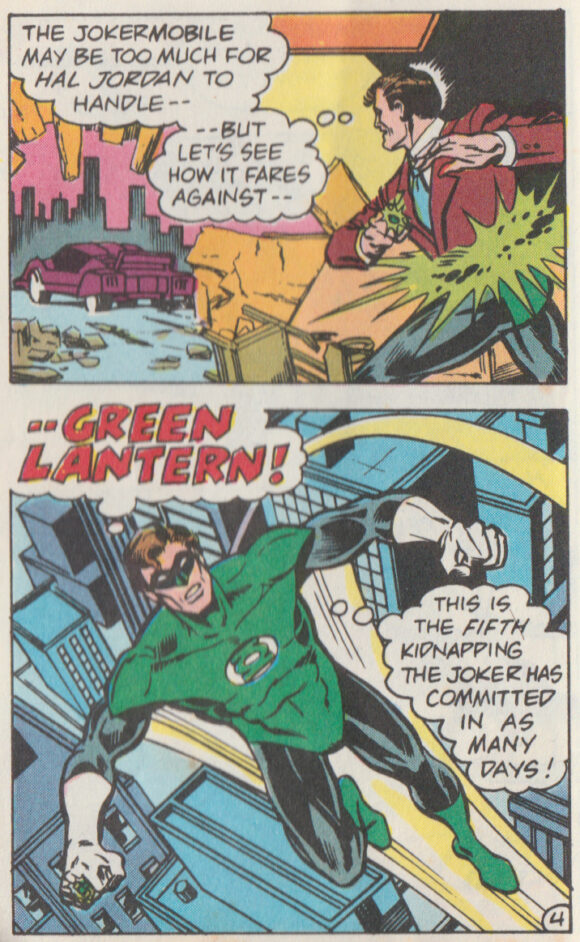
Interior page from Super Powers Green Lantern mini-comic
Hal Jordan was about to give up his Power Ring, making John Stewart the Green Lantern of Space Sector 2814. The Justice League of America would soon be disbanded by Aquaman, then relaunched with lower-profile heroes who could commit to the team full-time, including some new recruits, in what is often called the “Justice League Detroit” era.
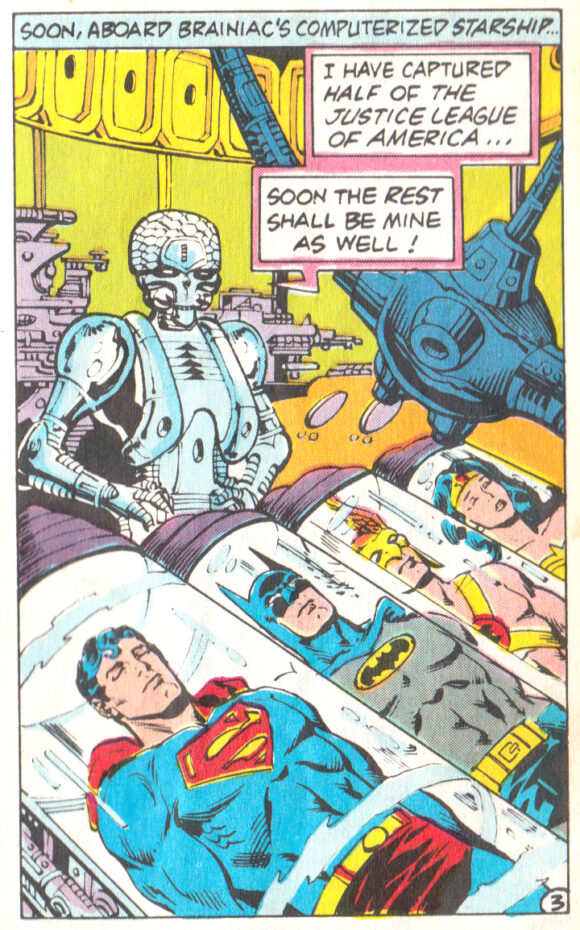
Interior page from Super Powers The Flash mini-comic
None of these changes were reflected in the mini-comics, and despite the classic iterations of these characters and concepts mixing in with fresh interpretations of Luthor and Brainiac, reading these comics often feels like a fond look back at the DC heroes at their most iconic. The toy line launched one year before Crisis on Infinite Earths would forever alter the DC Universe, along with tonal-shifting projects like Batman: The Dark Knight Returns. The mini-comics were one last glimpse at a world resplendent in Silver and Bronze.
—
MORE
— The TOP 13 Classic SUPER POWERS Figures — RANKED. Click here.
— INSIDE LOOK: Dig This New ‘Super Powers’ HALL OF JUSTICE Playset. Click here.
—
Chris Franklin is a graphic designer, illustrator, and podcaster, who co-hosts several shows on the Fire and Water Podcast Network, including JLUCast, which he produces with his wife Cindy. Squeeze his legs and he can usually identify a comic artist’s work.
—
*Editor Dan says it’s Mego World’s Greatest Super-Heroes, but hey.

April 8, 2023
The “Super Powers” universe deserves to be remembered as an important part of pop culture. 🙂
April 8, 2023
Excellent article, Chris. I love these comics and have the same feelings of them being the “last gasp” of the versions of the heroes I knew.
April 11, 2023
Have the series.
Also the comic features the characters doing teir super power in the story!! Play play play. The cards explained the powers weaknesses enemies. Macfarlane needs to restart his line. Besides the vehicles It’s weak.
January 2, 2025
Some of the original cover art for these are signed E Chan which would likely be Ernie Chan and their is a note in blue pencil on one of the original pages to Frank which would like indicate that Frank McLaughlin was inking it.